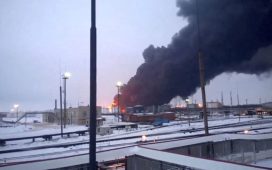When talking about the movement of oil prices, I often refer people to the movie “Trading Places,” and specifically to the scene where the elderly investment bankers are explaining the futures market to street hustler Eddie Murphy, and he says, “I get it. You guys are bookies.” One of the brothers turns to the other and says, “I told you he’d get it.” To many, Wall Street, stock and commodity markets, appear like gambling which serves no purpose, which is a complete misunderstanding of their function. (Topic for another day.)
Granted, the sudden swings in the market seems to many to resemble gambling more than investment, and the scene in “Trading Places” where brokers shift their trading on a dime based on a piece of news or rumor does not help correct that impression, but the point is that, in the long run, all of those pieces of news add up to market information that informs the traders and helps to determine the appropriate prices.
That said, far too many take individual pieces of data or events as evidence of long-term trends and fail to differentiate between transient events or exceptions to the rule and long-term or fundamental trends. Examples include the Shah of Iran, who sold an individual cargo of oil during the first Oil Crisis for $17 a barrel (about $80 adjusted for inflation), far above the posted price, and didn’t realize that was an aberration reflecting specific needs of a buyer, but thought it represented the true ‘value’ of oil. Needless to say, the Shah was not a microeconomist.
Many others made a similar mistake during the Iranian Oil Crisis, which was a complex situation but dominated by the loss of nearly 6 million barrels of day of supply because of the Iranian Revolution and the subsequent political disruption in the world’s foremost oil producing region. But ultimately, as expert reports weighed in, the conclusion was that the problem lay in the scarcity of oil resources, with the U.S. Secretary of Energy predicting that global oil production would never surpass the then level of 65 mb/d. (It has hit 100 since.)
Now, there are many looking at the pandemic and arguing that it will accelerate the date of peak oil demand given likely behavioral changes including much more working from home, less business travel and more virtual meetings, and far less airplane travel and long-distance tourism. Others have argued that renewable energy usage will be boosted by the pandemic, pointing to instances where renewables’ share of power generation surged.
The first problem will all of this is that we are still in the midst of the pandemic, and not even sure whether it’s the third or seventh inning (out of nine, for those not familiar with baseball). Consumer behavior post-pandemic is highly uncertain and the current anecdotal evidence is of minimal value. Commuting to work is still down, but recovering and once a vaccine is widely available could increase dramatically. Outdoor dining in areas where the lockdown has been eased has surged, and people show a strong desire to engage more in social activities, from going to restaurants to amusement parks, but whether that’s a post-lockdown surge that will fade is uncertain.
There are analogues which are instructive. After the 9/11 terrorist attacks, travel dropped off sharply and videoconferencing increased, which some thought would persist. But at the figure below shows, passenger miles in the U.S. dipped, then recovered until the 2008 recession, when they dipped again and recovered. The trend line does not appear to have been altered by either of those two instances. I hate the annoyance of airport security as much as anyone, and it imposes an economic cost, but it hasn’t deterred me from flying.

U.S. air passenger miles (millions)
And just a few years ago, the 2008 recession and the subsequent rise of ride-sharing apps led to a belief that the days of widespread car ownership were ending. Millennials were not only not buying cars, they seemed less interested in obtaining drivers’ licenses. Detroit’s business model was on the verge of obsolescence. Yet observe the figure below, which shows auto sales (in dollar terms, not units) in the U.S. and it becomes clear that the 2008 recession and dip in sales was a transient—the trend line is, if anything, up in recent years.

Millions spent monthly on automobiles
Over the next six months, there will be an endless parade of pundits describing the massive upheaval in public behavior and economic structure after the pandemic, and while some of them might be prescient (more luck than insight in most cases), a healthy degree of skepticism is in order.








